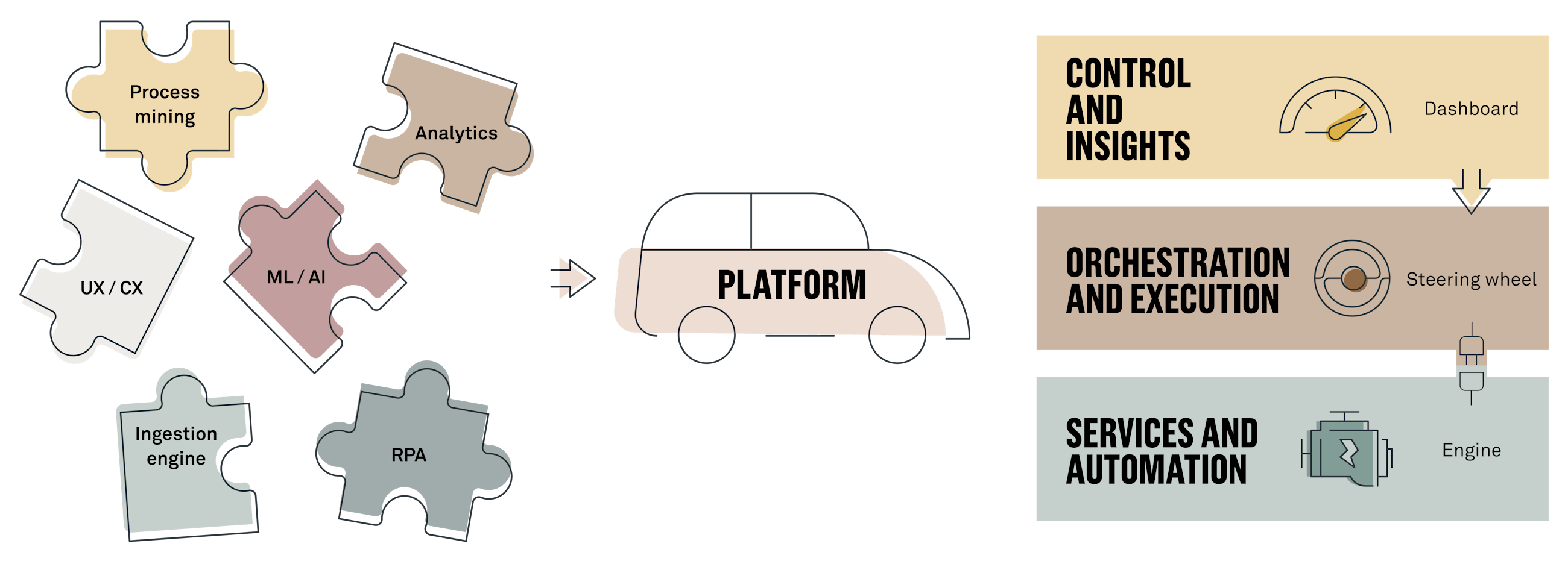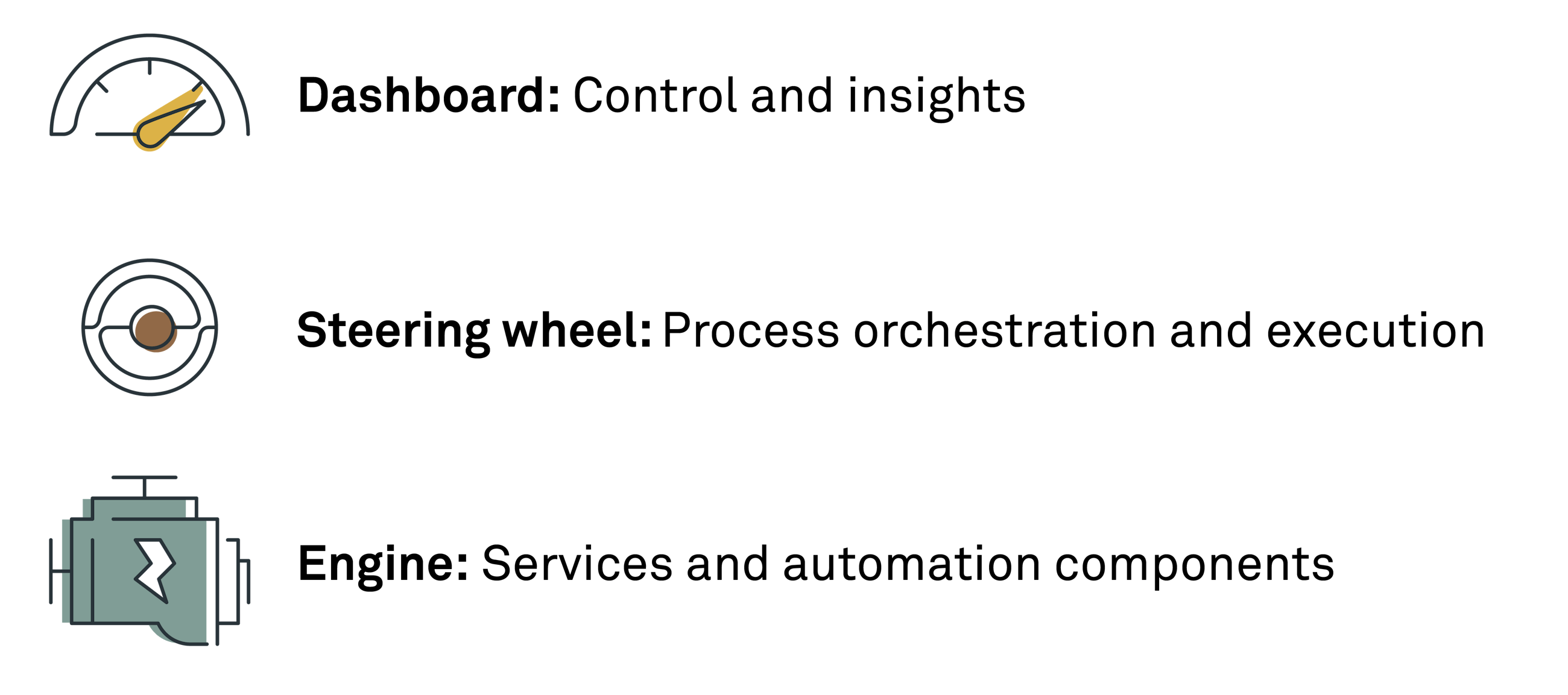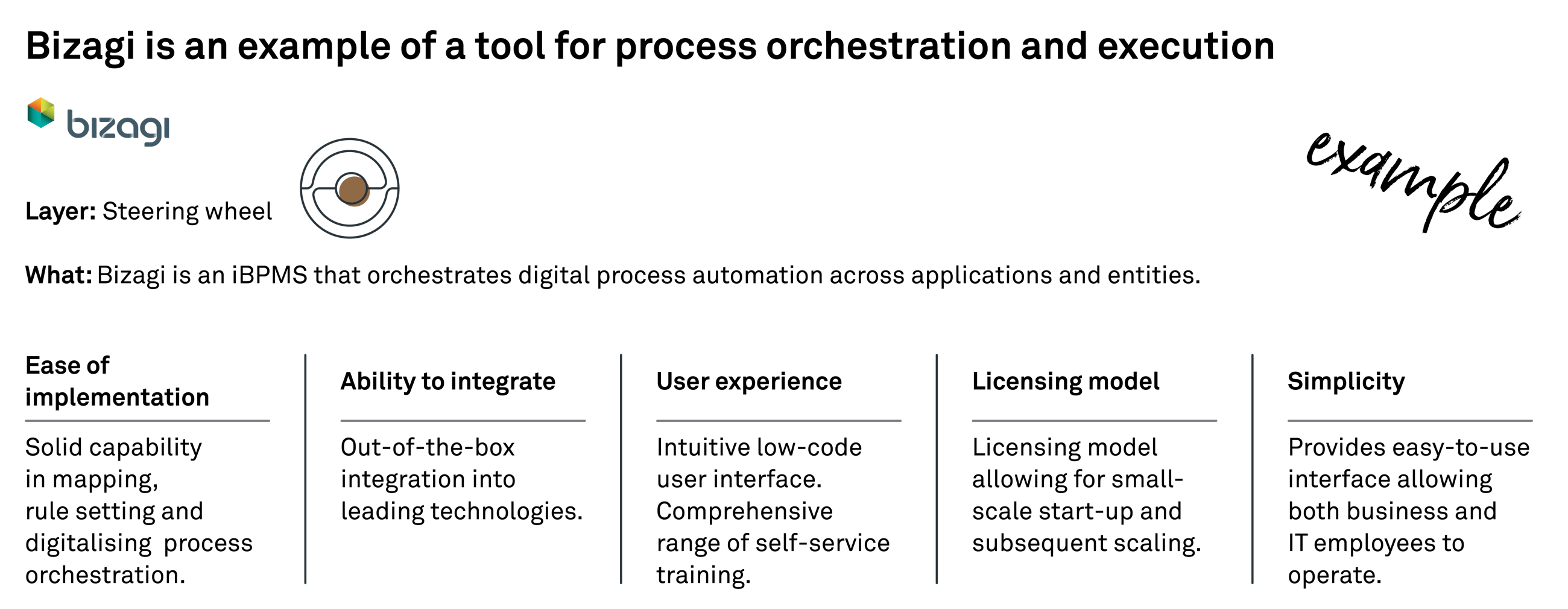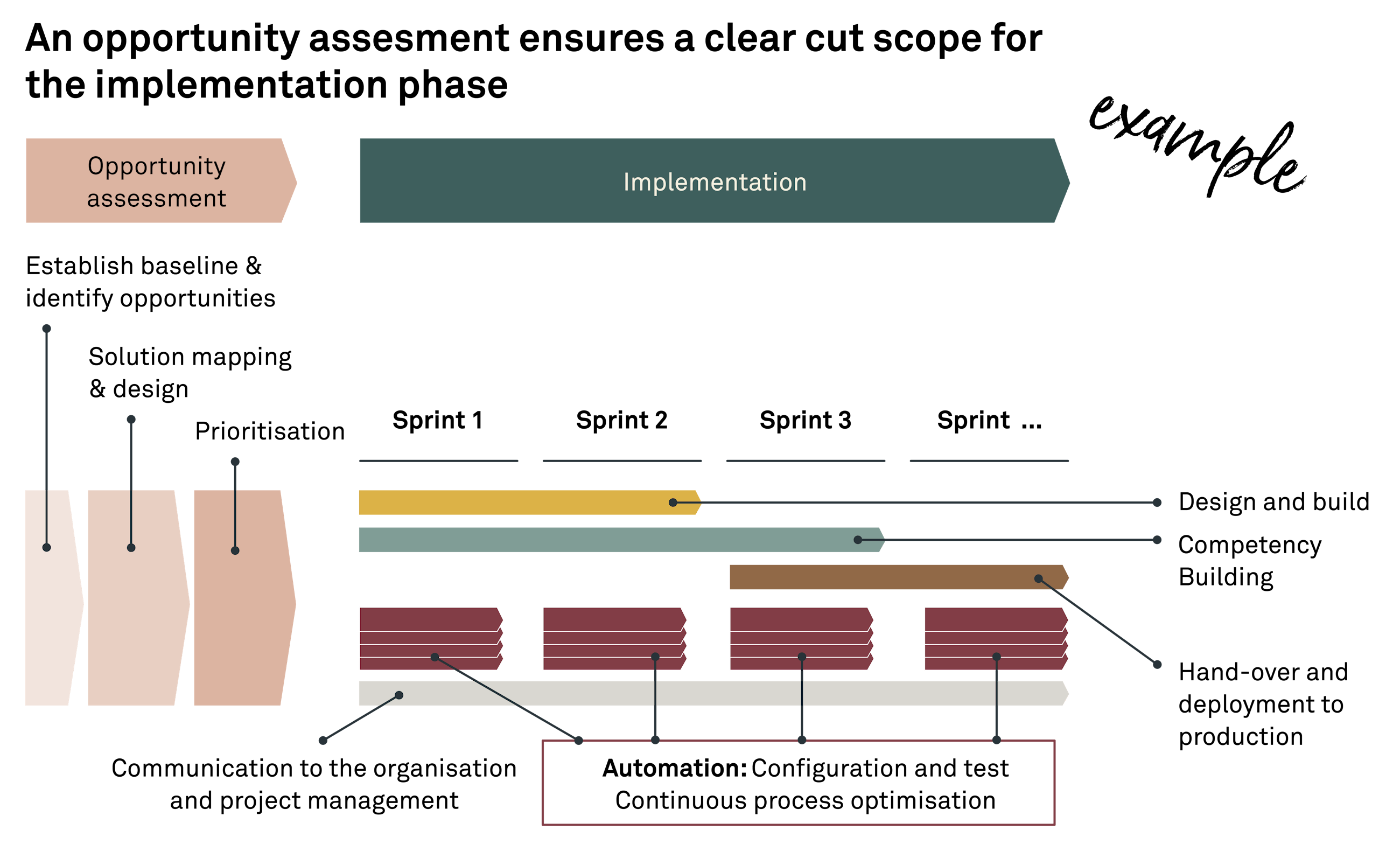Piecing together the hyperautomation puzzle
22 February 2021
Implement’s Intelligent Automation platform: a new approach to digital process transformation
Customer expectations are changing more rapidly than ever. As a company, you are expected to provide a seamless end-to-end experience for every customer interaction.
Consequently, companies must transition to a customer-centric business model, and in this transition, executives seem to have one common denominator on the strategic agenda: going digital.
The journey into a digital and customer-centric future requires a shift from traditional one-size-fits-all systems towards a new age of tailored micro services. By focusing on tailored micro services, you can create a backbone for efficient and flexible operations with resilient delivery of services.
“As no single tool can replace humans, hyperautomation today involves a combination of tools, including RPA, intelligent business process management software (iBPMS) and AI, with a goal of increasingly AI-driven decision-making.”
- Source: Gartner top 10 strategic technology trends for 2021
But how do we apply the hyperautomation tools correctly to transform our service operations and ensure impact?
In our experience, a structured approach is needed. An approach that moves beyond focusing on isolated pieces of the hyperautomation puzzle and instead addresses digital process transformations through an Intelligent Automation platform.
Introducing the Intelligent Automation platform
The Intelligent Automation platform provides the tools and methods for how to integrate the technologies within the hyperautomation space while ensuring business impact.
Implement has strong experience in helping organisations accelerate their digitalisation journey through various automation and digitalisation technologies within the hyperautomation space. Yet, we often see that the scope of the projects is set by the limits of the individual technology rather than by the challenges faced by the business.
Using the Intelligent Automation platform, you can deploy the hyperautomation technologies using a platform approach. Thus, you can exploit synergies across the value chain.
Often, you can apply one solution to numerous activities even if the activities have different purposes and are executed as part of different processes and functional areas.
Thus, when you design solutions using a combination of tools while looking across processes, teams and functions, you are able to deliver greater benefits than if you applied each tool independently in different areas of your organisation.
Illustrating the Intelligent Automation platform with a car analogy
The Intelligent Automation platform can be explained as a car with three interdependent layers; a dashboard, a steering wheel and an engine. Each layer has its own methods and carefully selected tools.
The tools within each layer have been carefully selected based on five criteria. When you combine the tools, you can create flexible and scalable solutions that support you in alleviating business challenges while capitalising on synergies across your organisation.
Demystifying the layers of the platform
The Intelligent Automation platform consists of three interdependent layers. Each layer serves a purpose that is essential for “running the car”. In the figure below, you can find examples of the purposes of each layer.
By connecting the functionality of the tools within each layer, you can create a seamless end-to-end experience for your customers.
The automation and process reengineering results in freed up time which the employees then can use to solve more value-adding tasks.
Demystifying the layers of the platform
The Intelligent Automation platform consists of three interdependent layers. Each layer serves a purpose that is essential for “running the car”. In the figure below, you can find examples of the purposes of each layer.
By connecting the functionality of the tools within each layer, you can create a seamless end-to-end experience for your customers.
The automation and process reengineering results in freed up time which the employees then can use to solve more value-adding tasks.
Getting started
To embark on your Intelligent Automation platform journey, you start by conducting a 3-step opportunity assessment before starting the implementation.
The purpose of making the assessment is to ensure a solution design that captures synergies and impact when you apply the solution to business challenges across your value chain in the implementation phase.









